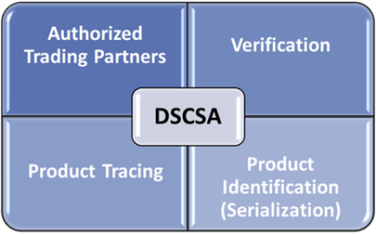When will companies start sending EPCIS? If a solution provider supports DSCSA compliance, why do users need to do anything other than ensure their products are aggregated?
These were among the questions people asked at our second “DSCSA 2023” webinar last month, “ASN to EPCIS: Industry Change, Your Challenge.” Herb Wong, rfxcel VP of Marketing and Strategic Initiatives, was the host, and we share his answers to the most-asked questions below.
Check back tomorrow, because we’ll be posting the top questions from the third and final webinar in the series, “Authorized Trading Partners: The OCI Solution.” You can also read our answers to the top questions from the first webinar, “The Verification Router Service: Aligning to the Standard.“
If you have other questions or want more details about DSCSA 2023, contact us today. Oh, and you can watch the entire “DSCSA 2023” webinar series and download the presentation slides here.
When will companies start sending EPCIS?
It has already started. However, the industry hasn’t achieved the volume it will need for 2023 (or right now, for that matter). There aren’t exact figures of the current volume of returns supply chain stakeholders (e.g., manufactures and wholesale distributors) are generating, but we do have anecdotal information from one of the Big 3 that they’re getting only about 10 percent. That data is a few months old, though, and that number could have increased. But overall, the industry needs to continue boosting the volume.
If a solution provider supports DSCSA compliance and industry (e.g., HDA) requirements, why do users need to do anything other than ensure their products are aggregated?
A DSCSA solution should ensure you’re compliant and adhering to industry standards. But there’s more to it than that. For example, a solution provider needs permission from a manufacturer to send its serialized data; however, some manufacturers have chosen not to send this data, even though they have the means to do so. Right now, it’s important to be sending this data so solution providers can continue to work with the industry to ensure that all the data entering the system is clean and the VRS is working well.
So, it’s not that a solution provider can’t handle this for you. The issue is that providers need their customers to agree to send the information and communicate with their trading partners to make sure everyone’s on the same page. This needs to occur throughout the supply chain (e.g., as manufacturers send data to wholesale distributors and wholesale distributors send data to dispensers). Also, dispensers need to be able to receive the data. It’s all about communication and coordination.
What is the vision for the Center of Excellence? Will membership be open to everyone at no cost, or will it be limited to certain organizations?
The current vision is that there will be no fees. The intention is to facilitate broader coordination among all participants to encourage data to flow through the system and to build an optimal method for resolving issues. As for membership, the reality is there has to be coordination with certain groups, because it will be difficult to succeed without some sort of organization to “rally around.” In all likelihood, the Center of Excellence will probably be coordinated through the Healthcare Distribution Alliance (HDA). But even if you’re not an HDA member, that shouldn’t preclude you from participating.
What about transformation of events of inbound to outbound serial numbers for 2023 requirements?
Here, “transformation” means, for example, sending a pallet to a wholesale distributor who then “transforms” it by opening a case and sending individual products downstream (e.g., to a dispenser). The vision is to have each entity that transforms — unpacks and repacks — products to manage that process inside their own organization. The role of EPCIS is to handle the actual communication of every transformation. It’s important for the industry to understand and be able to verify every transformation event, and EPCIS is the tool that makes this possible.
In terms of repackaging, an example would be if a company puts different medicines (with different SKUs) together in a new configuration, or package, that meets a certain need (e.g., a combination of pills to treat a specific condition). In that process, the repackager must issue a new serial number that would have to be DSCSA-compliant in terms of EPCIS data flow.
These are the kinds of scenarios the industry needs to flesh out and be ready for by 2023.
More DSCSA 2023 resources from rfxcel
- DSCSA ATPs: Top Authorized Trading Partner Questions, Answered
- DSCSA 2023: Understanding DSCSA Authorized Trading Partners, Part 1
- DSCSA 2023: Understanding DSCSA Authorized Trading Partners, Part 2
- DSCSA 2023: The Future of Pharmaceutical Traceability in the United States
- ATP Credentialing in the rfxcel VRS solution
- Plan for DSCSA Readiness webinar with Herb Wong (March 31, 2021)
- Dispensers and DSCSA 2023 (white paper)



